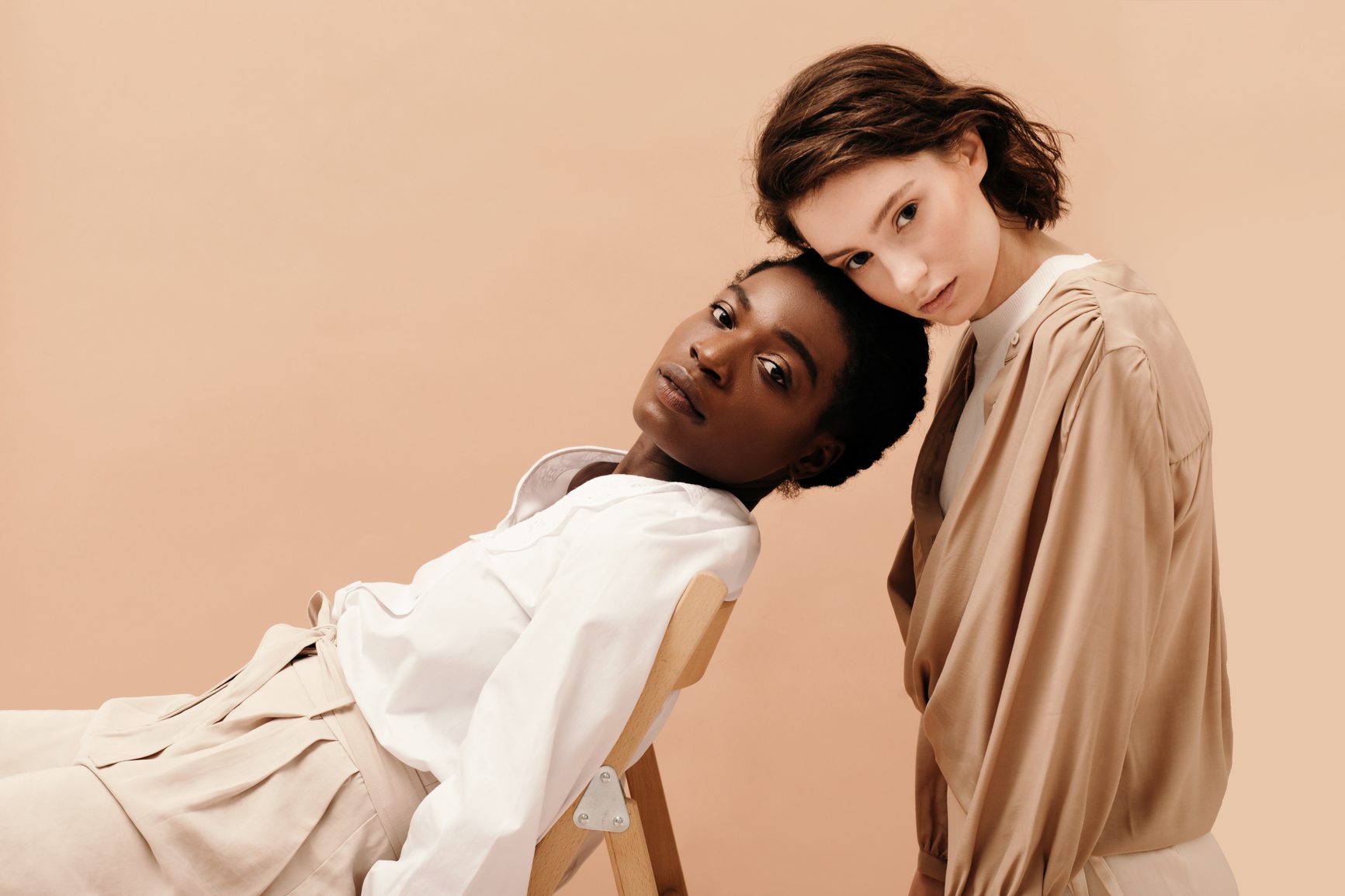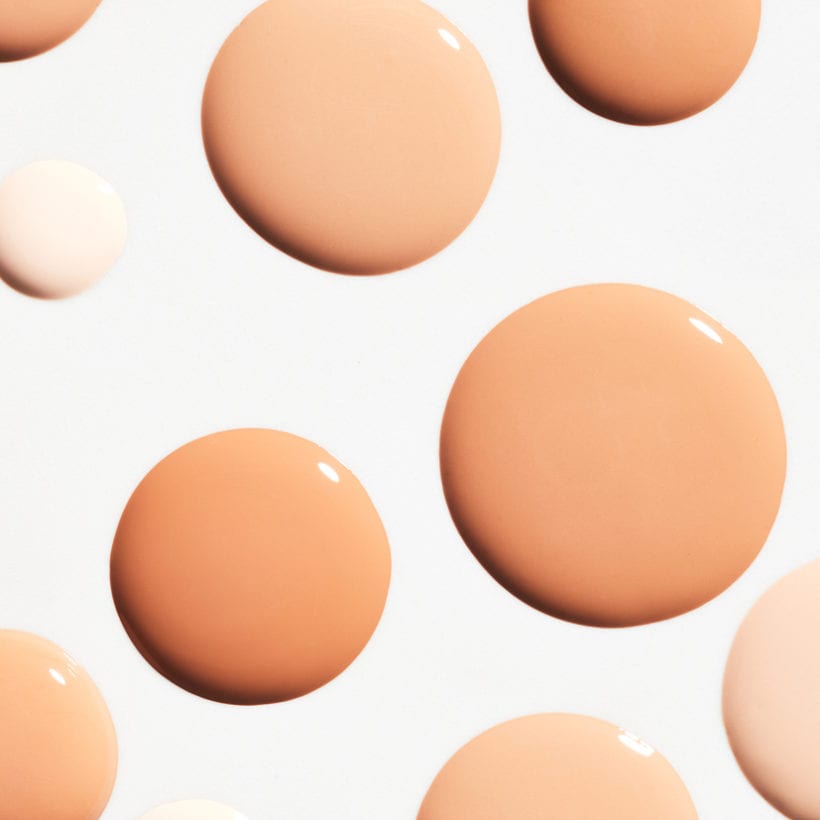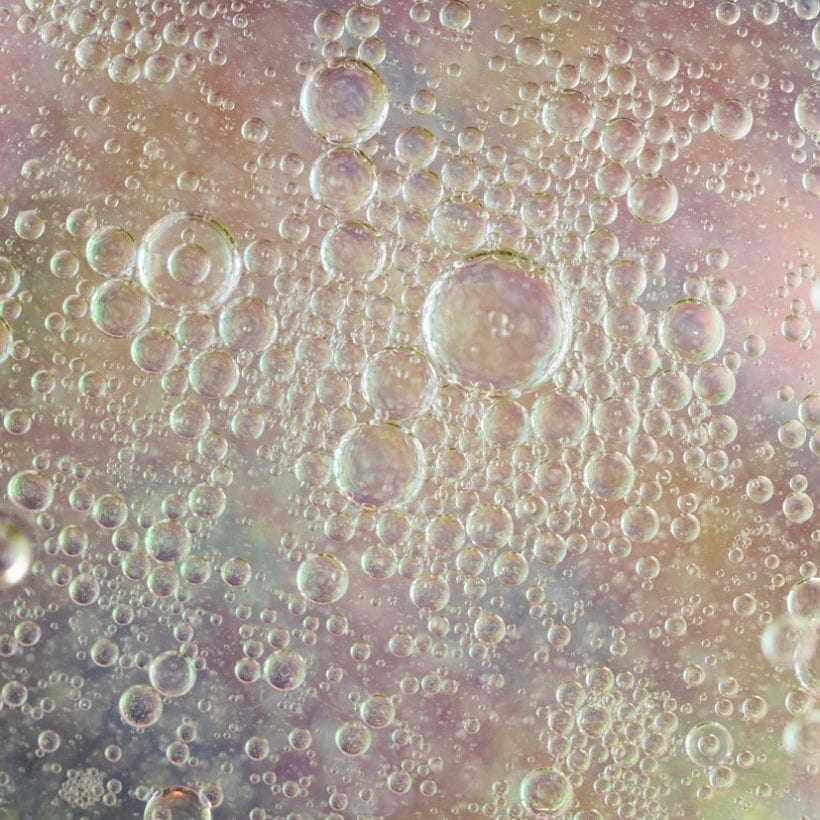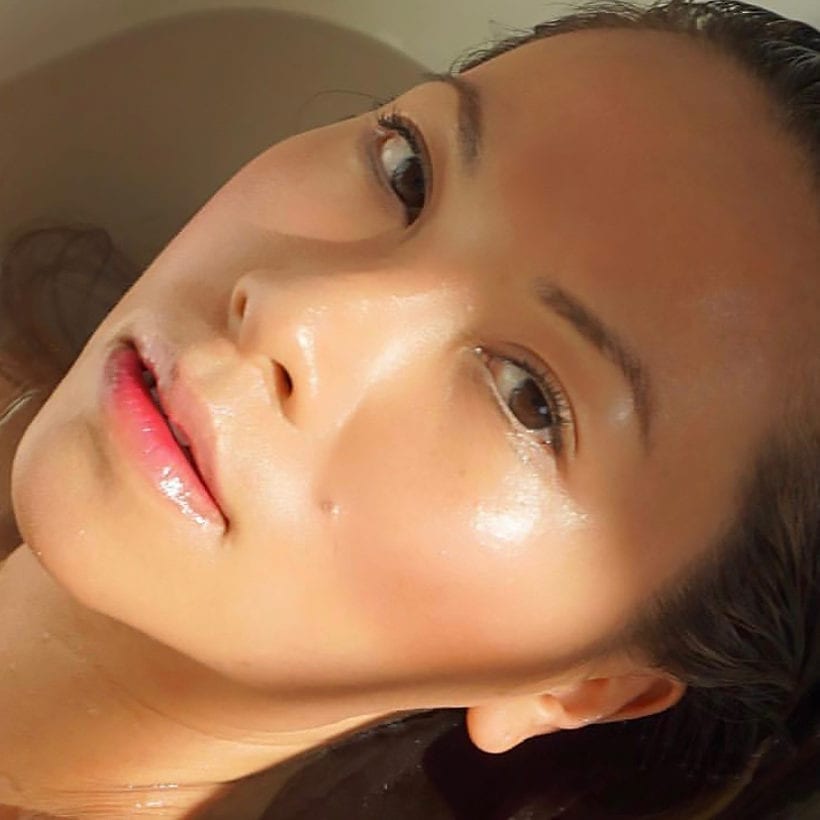When I was in my late teens, I went to the Prescriptives makeup counter at a department store in the mall, and the saleswoman put a few stripes of foundation on my face with yellow and pink undertones. Then she walked me outside the mall and looked at the swatches in the natural light, handing me a mirror (which felt as uncomfortable as it sounds, standing on the mall sidewalk looking at myself). But, it taught me my undertone, and we were able to suss out my ideal foundation shade. And though Prescriptives is no more, my undertone is one thing that will remain the same for life.
That’s right, your undertone will never change, regardless of sun exposure, age, hair dye, etc. Why? Because undertone is the underlying pigment beneath your skin tone and can be either cool, warm or neutral. Without getting too scientific, the shade of undertone comes from skin translucence and things under the skin like keratin, hemoglobin and collagen. It’s different from skin tone, which is affected by the amount of melanin in the skin. Pro Kristofer Buckle says, “The undertone of your skin has nothing to do with how dark or light your skin is. Very dark skin can have cool undertones, and very light can have warm.” So what are the three undertone categories, and how do you suss what yours is?
Cool: “Tends to be blue or pink-based,” according to makeup artist Katie Mellinger.
Anne Hathaway, Rosario Dawson and Lupita Nyong’o are examples of cool.
Warm: “Tends to be yellow, peach or golden-based,” says Mellinger.
Blake Lively, Priyanka Chopra Jonas and Beyonce are three warms.
Neutral: “A mixture of both,” she says. It means your undertones are close to your skin tone.
Famous faces in the neutral category include Kerry Washington, Jennifer Aniston and Selena Gomez.
There are many tricks to figure out your undertone, and frankly, they are not all straightforward or full-proof. “Some people are easier to identify because it’s obvious,” says Buckle. “But the less obvious your undertone is, the more forgiving it will be if you get it wrong.” Here are the pros’ top methods for sussing out if you’re cool, warm or neutral. Mellinger says, “Whichever method you choose, make sure you assess your shade in natural, bright light.”

Veins. Flip your wrist and look at your veins. “If they look greenish, then there is a good chance you have warm undertones. If veins look blue and you have a lot of pink in your skin, you are probably cool,” explains Buckle. Adds Mellinger: “if you see both blue and green, then you are probably a neutral undertone.”
The Paper Test. Mellinger’s favorite method is to hold “a piece of bright white paper (or a white piece of clothing) up to your face. Do you look more yellow? You’re a warm undertone. Or are you a little bit pinker? Then you’re probably a cool undertone. If you can’t really tell, you’re more than likely neutral.”
You + Sun. “Do you burn, or do you tan?” asks makeup pro Josefine Wissenberg. “If you burn, you have a cool undertone. If you tan, you are a warm undertone and if you are a bit of both — burn a little and then tan — you are neutral.”
Foundation. Makeup artist Kela Wong calls this the easiest way to tell: “Test a swatch of foundation below your cheeks, above your jawline. If your foundation is too pink or too yellow, it will clash with your skin, leaving the skin to look more pink or yellow.” The right shade of foundation should be “seamless.” Most foundations these days will give a description of the undertone for that shade. As an example, look at Pat McGrath’s 36 shades of foundation. If you have a medium skin tone, then you’d try all the medium shades and see which looks closest to your skin, almost as if you don’t see it gliding on. That’s your undertone.
Jewelry Assessment. Put a piece of silver or gold jewelry by your face (or fabric if you have it) and see which makes you look bright and glowing. Silver? You’re likely cool. Gold? Most likely, you’re warm. Both and rose gold? Likely neutral.
If you still aren’t sure, go to a beauty retailer or makeup counter (actually, go to five, so you can make sure) and ask.
Does everyone fit into one category? Not necessarily, says Mellinger. “Everyone has a bit of both warm and neutral undertones in their skin; some people just tend to skew more in one direction.”
So you’ve figured out your undertone, but why? As Wissenberg points out, most of us want to “look radiant and effortless and for our features and complexions to really shine,” and working with your undertone will help achieve that. For starters, “knowing your undertone definitely helps when choosing the right foundation shade,” says Mellinger. And that’s especially true when shopping online. Once you know your undertone, it’s easier to narrow down the shade that will work best for you.
Your undertone can also help guide you to flattering blush, lipstick and eyeshadow shades. In general, go “opposite to your undertone with lipsticks and eyeshadows to look fresh and not muddy,” says Buckle. For example, “If you have a lot of gold in your skin (warm undertones) and wear warm brown shadows and a bronze cheek with a brown or nude mauve, you can look muddy. Using colors that contrast can give you a pop of freshness, like using a brown that has a violet undertone or a blush that is a cool pink.” Adds Wong: “Certain colors make you look bright and cheery while others can make you look more tired and drab. The perfect example is how certain eyeshadows can make you look fresh or look like you have red eyes. If your tone is more yellow, then ochre or mustard shades will make you look tired, drained and sallow.”
But don’t follow these rules too closely, says Mellinger. If you put on a lipstick that supposedly shouldn’t work with your undertone but love how it looks, then rock it. “People can do whatever they want when it comes to color and having fun with makeup.”
We only recommend products we have independently researched, tested, and loved. If you purchase a product found through our links, Sunday Edit may earn an affiliate commission.







